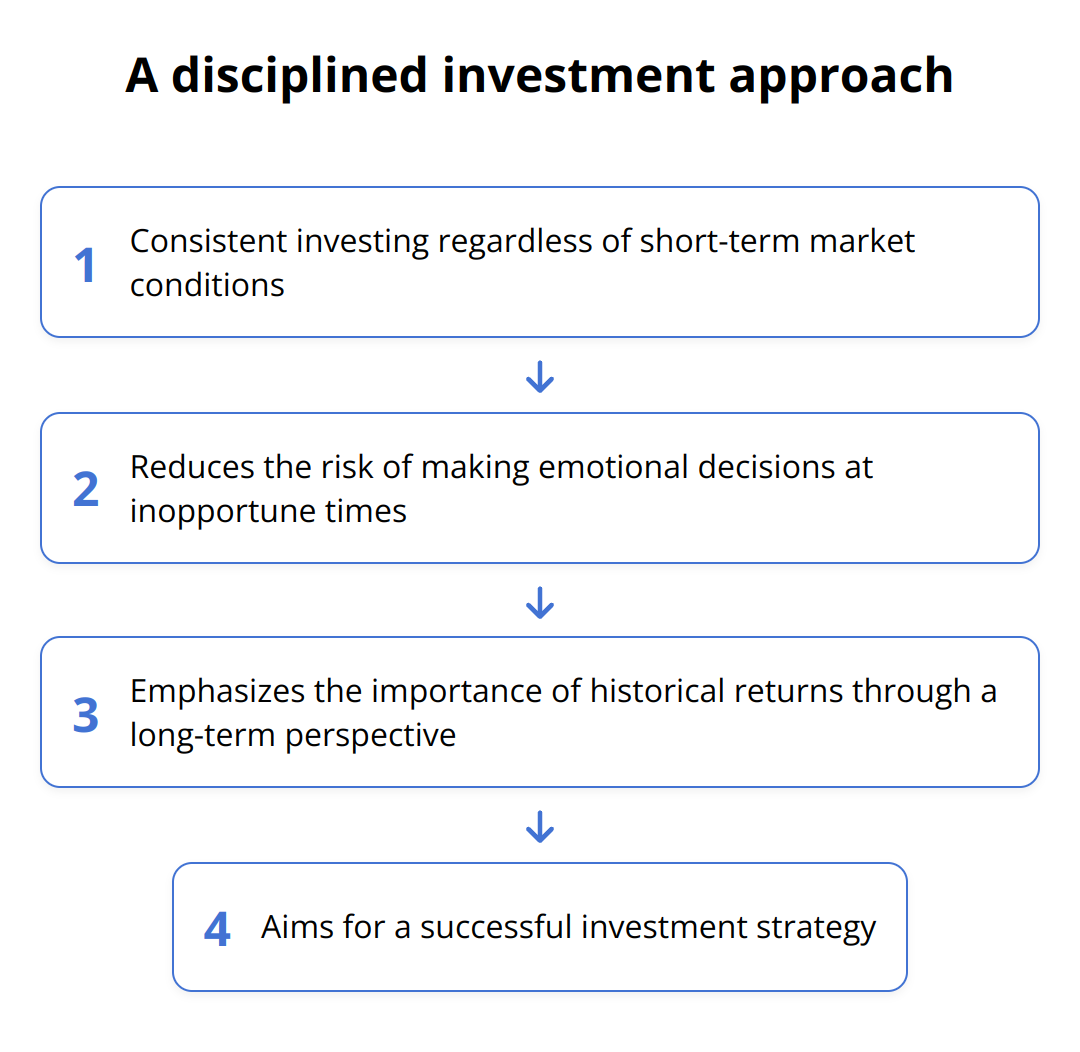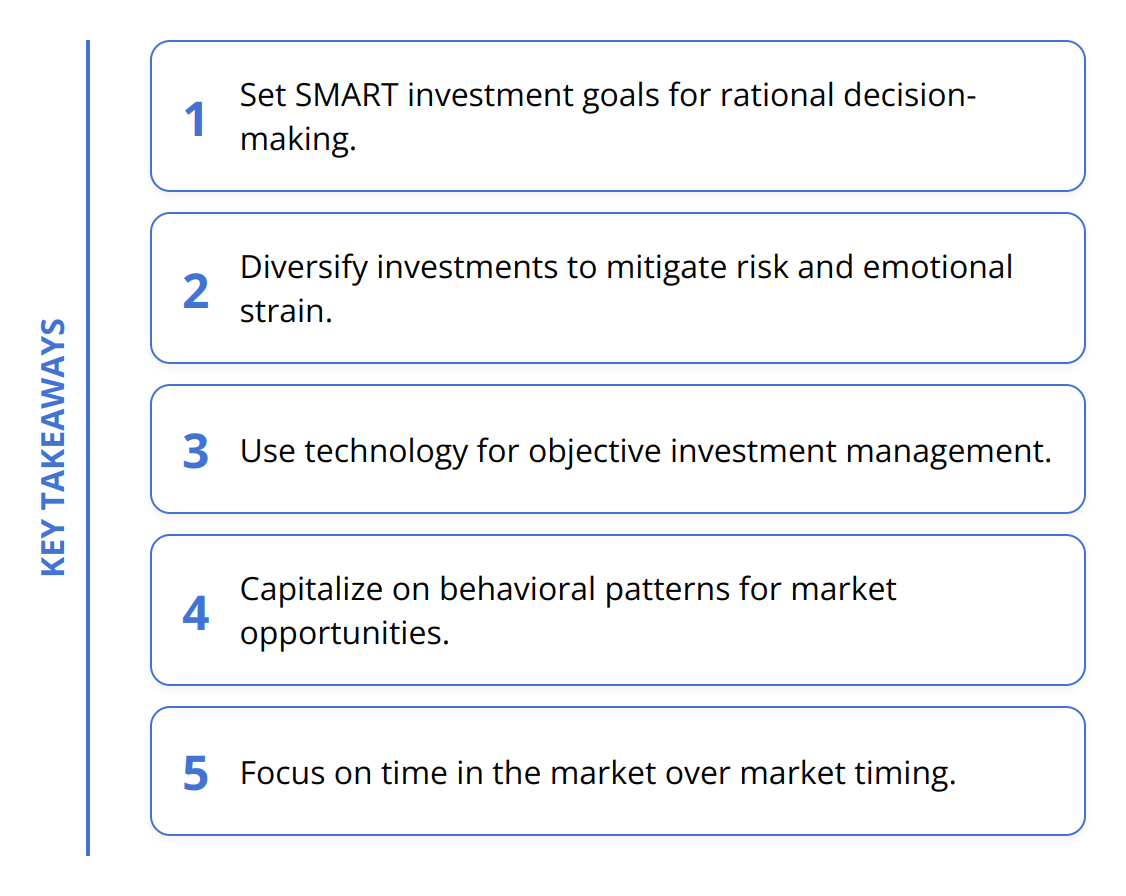At nasdaqpicks, we know that the path to investment success is not just about the numbers; it’s also about understanding the human mind. Behavioral finance stands at the intersection where psychology meets the financial markets, revealing why people often make irrational financial decisions.
In this blog post, we’ll explore practical strategies to overcome these biases and use behavioral finance to our advantage. Our goal is to guide you towards more informed and rational investment choices.
Behavioral Finance Explained
Behavioral finance merges psychology with finance, shedding light on why investors often make decisions that seem against their best interest or appear irrational. It’s a fascinating field that helps explain the emotions and cognitive biases that influence our financial choices. By understanding these psychological factors, investors can make better decisions, leading to improved investment outcomes.

Impact of Emotions on Investment Decisions
Emotions play a significant role in investment decisions. Fear and greed are powerful emotions that can lead investors to make hasty decisions, such as selling stocks during market lows due to panic or buying at peaks out of FOMO (Fear Of Missing Out). Recognizing and managing these emotions is key to avoiding common pitfalls.
Common Cognitive Biases
Cognitive biases impact how we process information and make decisions. Some of the most prevalent in investing include:
-
Confirmation Bias: Seeking information that confirms our current beliefs while ignoring conflicting data.
-
Overconfidence: Believing our ability to predict market movements is better than it actually is.
-
Loss Aversion: The fear of losses outweighs the pleasure of gains, which can lead to holding onto losing investments too long or selling winners too quickly.
-
Herd Behavior: Following the crowd without doing our own analysis.
Understanding these biases can help investors take a step back, review their strategies objectively, and avoid making impulsive decisions based on flawed reasoning or emotional reactions.
Mitigating the Impact
So, how can investors mitigate the impact of emotional and cognitive biases? Here are a few practical tips:
-
Set Clear Investment Goals: Knowing what you’re investing for can help maintain focus and prevent emotional decision-making.
-
Diversify: Spreading investments across various asset classes can reduce risk and the emotional impact of market volatility.
-
Take Regular Breaks: Stepping away from constant market monitoring can reduce stress and the temptation to make knee-jerk reactions.
-
Seek Professional Advice: A financial advisor can offer an objective perspective, helping to counter personal biases.
Each investor’s journey is unique but recognizing the influence of psychology on investment decisions is a universal step towards more rational and successful investing.

Understanding Market Outcomes
Market outcomes are not merely the result of economic indicators and corporate performance but also the collective result of individual investor behaviors driven by emotions and biases. Behavioral finance provides a lens through which we can better understand market fluctuations and investor reactions to news and events.
In essence, mastering behavioral finance doesn’t just make us better investors; it makes us more self-aware individuals in the vast realm of financial markets. By acknowledging and addressing our cognitive biases and emotional responses, we can strive for more informed, rational, and ultimately, successful investment decisions.
Overcoming Behavioral Biases
Successfully navigating the financial markets requires more than keen analytics—it demands a keen understanding of oneself. Overcoming behavioral biases is not just about knowledge; it’s about actionable strategies that align with our individual goals and context. Here, we reveal practical steps you can employ to steer clear of common cognitive pitfalls and cultivate a more disciplined investment approach.
Forge Clear Goals
The cornerstone of decided action in investing is clearly defined objectives. Without this, the investment journey veers into a wandering quest, easily swayed by the whims of market tides and psychological biases. Setting specific, measurable, attainable, relevant, and time-bound (SMART) goals provides a framework for rational decision-making, helps maintain focus during market downturns, and ensures alignment with broader financial aspirations.
For example, rather than aiming to “increase wealth,” target a certain percentage growth of your portfolio over a specific period. This specificity guides decision-making, lending immunity against the allure of short-term gains at the expense of long-term objectives.
Embrace Diversification
Diversification isn’t just a good idea; it’s your portfolio’s lifeline. By spreading investments across various asset classes, sectors, and geographies, you mitigate risk and reduce the emotional strain of market fluctuations. It’s easy to get caught in the trap of emotional investing when all your eggs are in one basket and that basket takes a hit. Diversifying ensures that losses in one area can be offset by gains in another, fostering patience and reducing the impulse to make precipitous decisions based on momentary fears or trends.

A diversified portfolio takes into account your risk tolerance and investment horizon, adjusting over time as these evolve. This means regularly evaluating and rebalancing your portfolio to maintain the desired asset allocation, a foundational step in disciplined investing.
Leverage Technology
In today’s investment landscape, technology is a powerful ally in counteracting our inherent biases. Tools for automated investing and portfolio rebalancing can significantly contribute to achieving a more balanced, objective approach to managing investments. Automated investing platforms allow for consistent investment at predetermined intervals, reducing the likelihood of emotional decision-making and market timing errors.
Likewise, rebalancing tools can help maintain your portfolio’s alignment with your risk tolerance and investment goals without falling prey to the biases of overconfidence or herd behavior. These technologies enforce a disciplined investment process, ensuring decisions are data-driven and aligned with your long-term financial aims.

In summary, overcoming behavioral biases is an ongoing challenge that requires a strategic approach:
-
Clearly define your investment goals.
-
Ensure your portfolio is diversified across a broad range of assets.
-
Employ technology for consistency and objectivity.
By adhering to these principles, investors can mitigate the effects of behavioral biases and pave the way for more successful investment outcomes.
Leveraging Behavioral Finance
Success in investing doesn’t just hinge on knowing what to invest in; it also depends on understanding how our behaviors shape our investment decisions. Leveraging behavioral finance for investment success means using the insights it provides to navigate the markets more astutely. By identifying patterns of behavior, understanding the nuanced debate between timing the market and time in the market, and utilizing the expertise of financial advisors, investors can significantly enhance their investment strategy.
Identifying Behavioral Patterns for Opportunities
One of the most actionable strategies in behavioral finance is recognizing and capitalizing on behavioral patterns. Markets are influenced by collective investor behaviors, often leading to predictably irrational decisions. For example, investors might overreact to negative news, causing stock prices to fall more than warranted. This overreaction can create buying opportunities for those who recognize that the fundamental value of the company hasn’t changed as drastically as the price suggests.
Similarly, the herd behavior observed in bull markets can drive prices above fundamental values, signaling a good time to consider selling overvalued assets. The key is to observe the market with a critical eye, looking for discrepancies between market prices and underlying values, which are often caused by widespread behavioral biases.
Time in the Market vs. Timing the Market
A common debate among investors is whether it’s better to attempt timing the market or to focus on time in the market. From a behavioral finance perspective, the emphasis should lean towards time in the market. Attempting to time the market is often futile and can be costly due to the influence of cognitive biases and emotional reactions. Numerous studies have shown that the majority of the market’s gains come from just a handful of days. Missing these days because of attempts to time the market can significantly impact long-term returns.

A disciplined, long-term investment approach reduces the risk of making emotional decisions at inopportune times. It’s about consistent investment, regardless of short-term market conditions, which historically has proven to be a successful strategy.
The Role of Financial Advisors
Financial advisors can play a crucial role in mitigating the effect of behavioral biases on investment decisions. They provide an objective view that contrasts with the often emotionally charged decisions of individual investors. Advisors can help investors stick to their financial plans during volatile periods, emphasize the importance of diversification, and remind investors of the long-term perspective necessary for investment success.
Moreover, financial advisors can incorporate tools and techniques into your investment strategy that specifically address common biases, such as loss aversion and overconfidence. For instance, they might recommend automated investment platforms to help maintain a disciplined investment strategy or use statistical analysis to highlight the benefits of long-term investing over market timing.
In summary, leveraging behavioral finance in your investment strategy means recognizing your biases, focusing on long-term investment instead of market timing, and possibly working with a financial advisor to mitigate the emotional impacts on your investment decisions. This approach doesn’t guarantee unprecedented returns but aims for a more disciplined, rational, and thereby potentially more rewarding investment journey.
Final Thoughts
Acknowledging and addressing behavioral biases is the first step toward a more disciplined and rational approach to investing. Our emotions and cognitive biases often lead us astray, pushing us toward irrational decision-making that can have a significant impact on our investment outcomes. By actively combating these biases and employing strategies such as setting clear goals, diversifying investments, and leveraging technology, investors can navigate the financial markets more effectively.

Education plays a pivotal role in overcoming these challenges. By understanding the principles of behavioral finance, investors can recognize the patterns of behavior that may influence their decisions. This awareness is key to developing strategies that counteract the negative impacts of these biases.
At nasdaqpicks, we’re dedicated to providing you with the resources you need to stay informed and make better investment decisions. Our platform offers timely news, updates on market fluctuations, and insightful analyses that can keep you ahead in the financial world. Whether you’re looking to understand the latest market trends or seeking advice on navigating the complexities of investing, our service is designed to help you stay informed and make the most of your investment journey.
In conclusion, the journey toward becoming a successful investor is not just about making the right financial decisions; it’s also about understanding ourselves better. By acknowledging our biases, employing practical strategies to combat them, and continuously educating ourselves, we can make more informed, rational decisions. Through this approach, we aim not only to achieve our financial goals but also to grow as investors and individuals.





